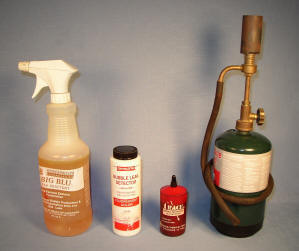pishta
I know I'm right....
With R134 being almost more than black market R-12 out here in Kalifornia...what can I use to locate a leak? Im down to 20 psi so Im not putting any more "4 in 1" R-134, PAG oil, stop leak (sure...) and dye $20 dollar bills in just to find a leak. Can I pump the system with air from a bike pump to 50 psi and start using soapy water on all the fittings or am I gonna make some Concentration camp death gas?? Its in my wifes 2002 T&C and I cant see any red dye in the engine compartment fittings but I think I have something in the back wheel well for the rear A/C, seems some big lines are going back there. Worked fine until it got hot here, now I got jack....

















